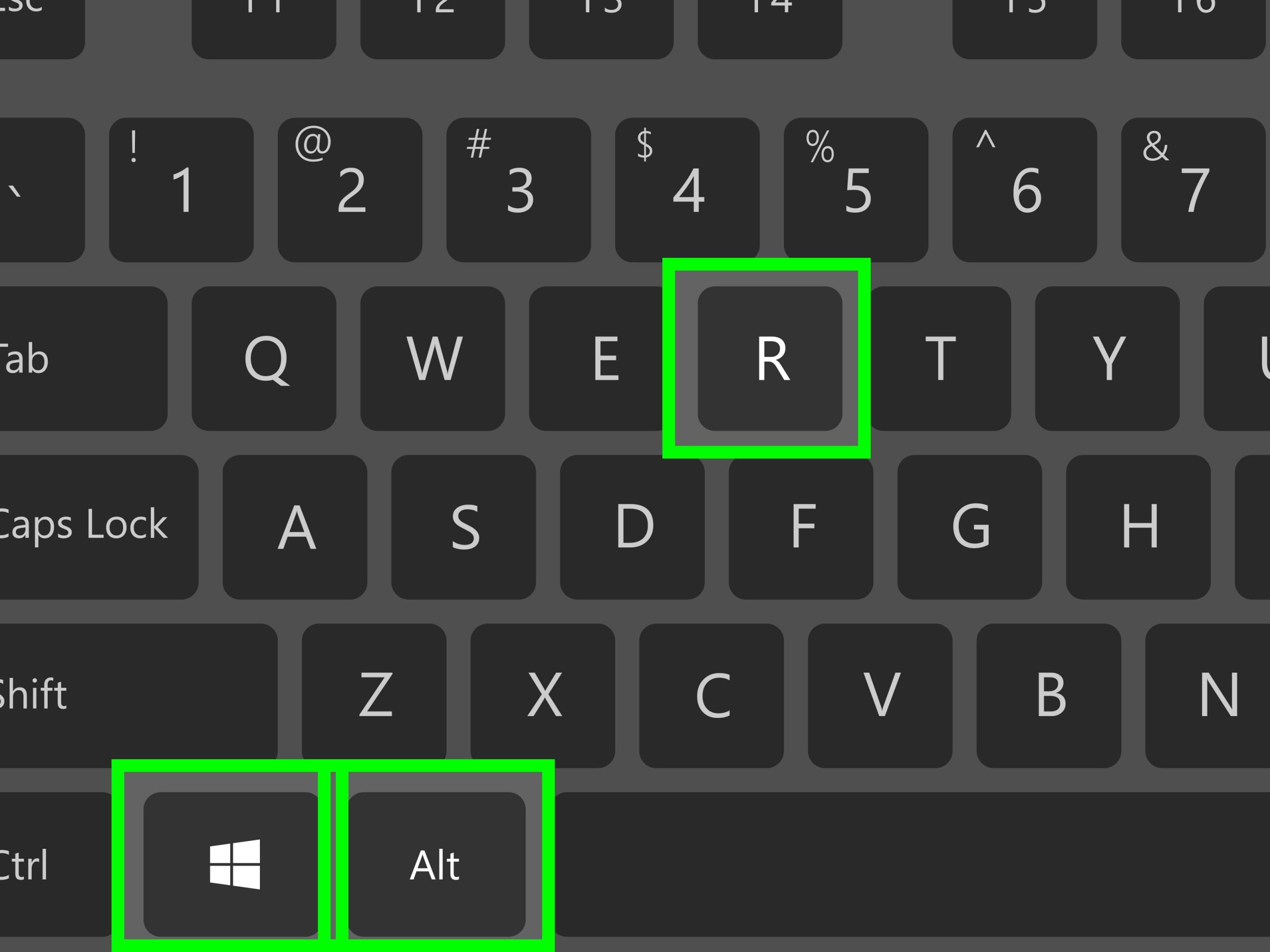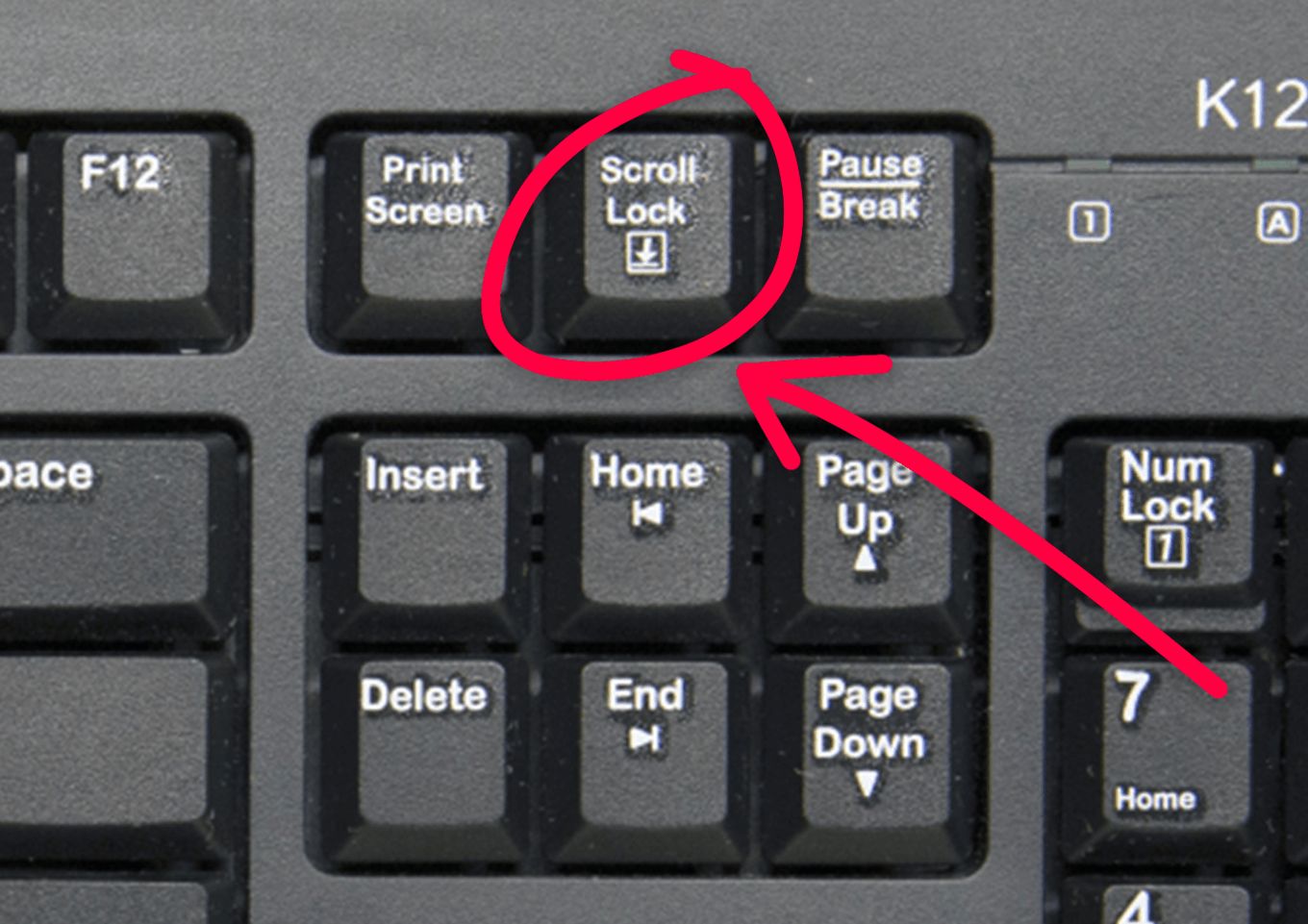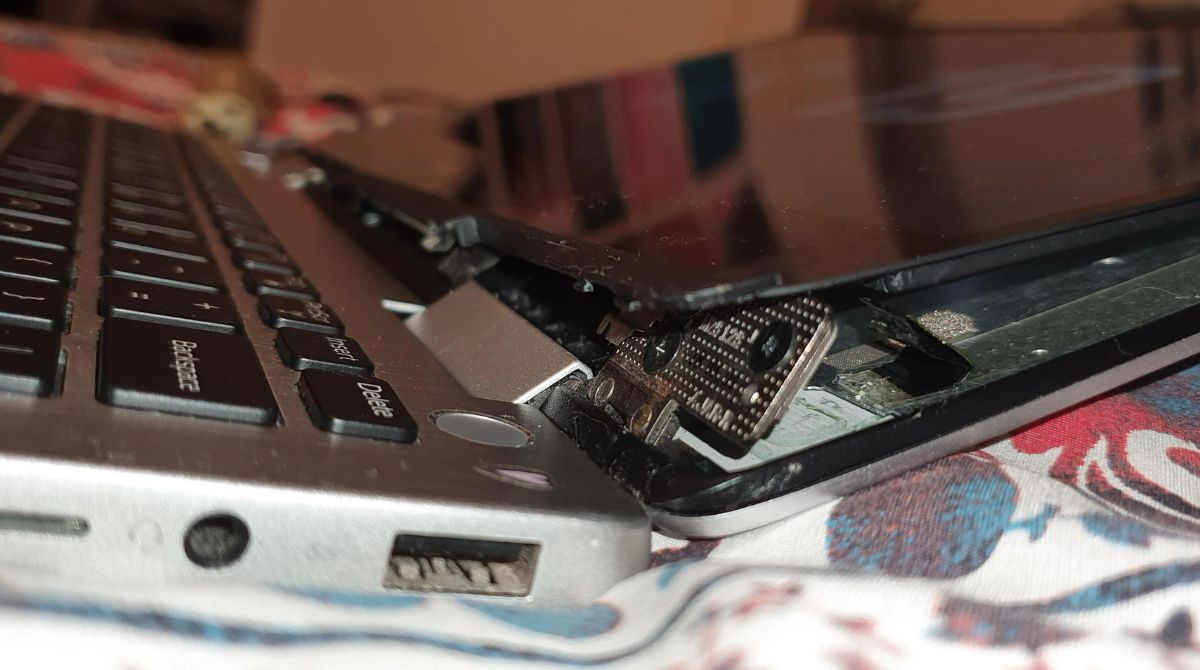Introduction
Welcome to this guide on how to screen record on a Dell laptop! Screen recording is an incredibly helpful feature that allows you to capture and save what is happening on your laptop’s screen, whether it’s for creating tutorials, recording gameplay, or saving important presentations. While Dell laptops do not come pre-installed with built-in screen recording software, there are several third-party applications available that can easily fulfill your screen recording needs.
In this guide, we will walk you through the step-by-step process of screen recording on your Dell laptop, whether you opt for a third-party screen recording software or utilize the built-in features of Windows or other operating systems. We will also discuss how to adjust the recording settings, stop and save your recordings, and provide optional tips on editing your screen recordings.
Screen recording has become an essential tool for individuals and professionals alike. It allows you to effectively communicate and share your activities, ideas, and tutorials in a visual and engaging manner. Whether you are a content creator, a teacher, a gamer, or someone who simply wants to capture a moment on their screen, this guide will help you get started with screen recording on your Dell laptop.
So, without further ado, let’s dive into the detailed steps and explore the various options you have for screen recording on your Dell laptop. Whether you are a beginner or an experienced user, this guide will provide you with the knowledge and tools necessary to effortlessly record your screen and capture those memorable moments.
Step 1: Check if your Dell laptop has built-in screen recording software
Before you begin the process of screen recording on your Dell laptop, it’s worth checking if your laptop already has built-in screen recording software. Some Dell models come pre-installed with such software, which can save you the trouble of installing third-party applications. Follow these steps to check if your Dell laptop has this built-in feature:
- Start by opening the Start Menu on your Dell laptop. You can do this by clicking on the Windows icon located in the bottom left corner of your screen.
- Next, search for “Game Bar” in the search bar at the bottom of the Start Menu. The Game Bar is a built-in feature in Windows 10 that includes screen recording functionality.
- If the search results show “Game Bar settings,” click on it to open the settings page. If not, it means your Dell laptop does not have the built-in Game Bar feature.
- If the settings page is open, make sure the “Record game clips, screenshots, and broadcast using Game Bar” option is turned on.
- You can also customize various settings related to screen recording, such as the keyboard shortcuts to start and stop recording, audio recording preferences, and more.
If you don’t find the Game Bar settings or your Dell laptop does not have the built-in Game Bar feature, don’t worry! There are plenty of reliable and feature-rich third-party screen recording software options available that you can install and use on your Dell laptop. We will cover these options and the installation process in the next step.
Remember, having built-in screen recording software on your Dell laptop is convenient, but even if your laptop doesn’t have it, you can still easily record your screen by installing third-party software. With that in mind, let’s move on to the next step and explore the options for screen recording software on your Dell laptop.
Step 2: Install third-party screen recording software on your Dell laptop
If your Dell laptop doesn’t have built-in screen recording software or if you’re looking for more advanced features, you can easily install third-party screen recording software. There are numerous options available, both free and paid, that offer a wide range of functionalities. Follow these steps to install third-party screen recording software on your Dell laptop:
- Start by researching available screen recording software options. Look for reputable software that is compatible with your Dell laptop’s operating system.
- Visit the official website of your chosen software and navigate to the download page.
- Select the appropriate version of the software for your Dell laptop’s operating system, ensuring it is compatible with your device.
- Click on the download button to initiate the download process.
- Once the download is complete, locate the downloaded file on your Dell laptop and run the installer.
- Follow the on-screen instructions provided by the installer to complete the installation process.
- Once the installation is finished, launch the screen recording software.
It’s important to note that during the installation, you may be prompted to customize certain settings such as the installation directory, shortcut creation, and additional software installations. Make sure to read each prompt carefully and choose the options that suit your preferences.
When choosing third-party screen recording software, consider the features you require, such as real-time editing, audio recording, webcam integration, and annotation tools. Take some time to explore the different options and read user reviews to ensure you select a reliable and user-friendly software.
If you prefer not to install any software on your Dell laptop, you can also explore online screen recording tools that allow you to record your screen directly from your web browser. These tools typically require a stable internet connection and may have limitations compared to installed software, so be sure to evaluate their features before use.
Now that you have successfully installed third-party screen recording software on your Dell laptop, you are ready to move on to the next step, where we will guide you through the process of adjusting the recording settings to ensure optimal results. Let’s proceed!
Step 3: Adjust the recording settings
Now that you have installed third-party screen recording software on your Dell laptop, it’s time to adjust the recording settings to personalize your screen recording experience. Every software has different settings, but we will cover some common configurations that you can customize. Follow these steps to adjust the recording settings:
- Open the screen recording software on your Dell laptop. The user interface will vary depending on the software you installed.
- Look for the settings or preferences section within the software. This is usually represented by a gear icon or a menu labeled “Settings” or “Preferences.”
- Explore the available options and customize them according to your preferences. Some common settings you may find include:
- Video resolution: Choose the desired resolution for your screen recordings. Higher resolutions will result in better quality but may consume more storage space.
- Frame rate: Adjust the frame rate of your recordings. Higher frame rates will result in smoother videos, particularly for recording fast-paced content like gaming.
- Audio source: Select the audio source for your recordings. You can choose to record system audio, microphone input, or both.
- Hotkeys: Customize hotkeys for starting and stopping screen recordings or accessing specific features during recordings.
- File format: Determine the file format in which your screen recordings will be saved. The most common formats are MP4, AVI, and MOV.
- Some screen recording software also offers additional advanced settings, such as video codecs, timestamp overlays, and mouse click effects. Feel free to explore these options based on your needs and preferences.
- Once you have adjusted the settings, make sure to save your changes before proceeding to the next step. The software will typically have a “Save” or “Apply” button to confirm the settings.
By customizing the recording settings, you can tailor your screen recordings to match your specific requirements and optimize the quality of your videos. Take some time to experiment with different configurations and find the settings that work best for you.
Now that you have fine-tuned the recording settings, you are ready to move on to the exciting part – screen recording! In the next step, we will guide you on how to start recording your screen on your Dell laptop. Let’s proceed!
Step 4: Start recording your screen on a Dell laptop
Now that you have adjusted the recording settings, it’s time to start recording your screen on your Dell laptop. The process may vary depending on the screen recording software you have installed. Follow these general steps to begin recording:
- Launch the screen recording software on your Dell laptop.
- Ensure that the desired recording area is within the frame or adjust the recording area if necessary.
- Check that all necessary audio sources are properly enabled, such as system audio or microphone input, based on your preferences.
- Once you’re ready to start recording, look for a dedicated “Record” or “Start” button within the software’s user interface. This button may be represented by a camera icon or a red circle.
- Click on the “Record” or “Start” button to begin the screen recording.
- Perform the actions on your Dell laptop that you wish to capture in the screen recording. Whether it’s demonstrating a software tutorial, showcasing your gaming skills, or presenting a slideshow, make sure to follow your planned content.
- During the screen recording, you may have access to additional features such as pausing or resuming the recording, highlighting specific areas on the screen, or adding annotations. Explore the software’s interface to access these options if needed.
- Once you have finished recording your desired content, locate the “Stop” or “Finish” button within the screen recording software and click on it to end the recording.
Upon stopping the recording, your screen recording software may either automatically save the video or prompt you to choose a location and file name to save it. Follow the on-screen instructions to save the recording to your desired location.
Remember, when recording your screen, ensure that you have sufficient free storage space on your Dell laptop to accommodate the size of the video file. Screen recordings can take up a significant amount of storage, especially if recorded at higher resolutions and frame rates.
Now that you have successfully started and stopped recording your screen on your Dell laptop, it’s time to move on to the next step to learn how to stop and save your screen recordings. Let’s continue!
Step 5: Stop and save your screen recording
After capturing your screen recording on your Dell laptop, it’s crucial to know how to stop the recording and save it properly. Follow these steps to stop and save your screen recording:
- Locate the “Stop” or “Finish” button within your screen recording software’s user interface. This button is typically used to end the recording.
- Click on the “Stop” or “Finish” button to stop the screen recording process. The software will process the recorded video and prepare it for saving.
- Once the processing is complete, you will usually be prompted to verify the saving location and file name for your screen recording. Choose a location on your Dell laptop where you want to save the video file.
- Give your screen recording a descriptive and meaningful file name that reflects its content and purpose. This will make it easier to identify later.
- Select the desired video format for your screen recording. Common options include MP4, AVI, and MOV. Choose the format that best suits your needs, taking into account compatibility and file size considerations.
- Click on the “Save” or “Confirm” button to save your screen recording to the specified location with the chosen file name and format.
- Depending on the length and quality of your screen recording, the saving process may take a few moments. Be patient and avoid interrupting the saving process to ensure a successful and complete file.
- Once the screen recording is saved, navigate to the location you specified to verify that the file has been successfully saved.
It’s important to note that screen recordings can generate large file sizes, particularly if recorded at higher resolutions and frame rates. Make sure you have enough available storage on your Dell laptop to accommodate the size of the recording.
Additionally, it’s recommended to back up your screen recordings periodically to prevent any data loss. Consider creating a dedicated folder or using cloud storage services to store and organize your screen recording files for easy access and future reference.
Now that you have successfully stopped and saved your screen recording on your Dell laptop, you can proceed to the next step if you wish to learn how to edit your screen recordings. Let’s move on!
Step 6: Edit your screen recording (optional)
Editing your screen recordings can enhance their quality and make them more engaging and professional. While editing is optional, it allows you to refine your recordings, add annotations, trim out unnecessary parts, and incorporate additional elements. If you choose to edit your screen recording, follow these steps:
- Choose a video editing software that is compatible with your Dell laptop’s operating system. There are many options available, ranging from free software to professional-grade editing tools.
- Install the chosen video editing software on your Dell laptop by following the provided instructions. Once installed, launch the software.
- Import the screen recording file you want to edit into the video editing software. Most software allows you to select the file from your saved locations or simply drag and drop the file into the editing interface.
- Once your screen recording is imported, you can begin editing. Some common editing options include:
- Trimming: Remove unwanted sections from the beginning or end of your screen recording to make it more concise.
- Adding annotations: Insert text, shapes, arrows, or highlights to emphasize certain elements within your screen recording.
- Background music: Add background music or sound effects to enhance the audio experience of your screen recording.
- Transitions: Apply smooth transitions between different segments of your screen recording for a more polished result.
- Captions and subtitles: Include captions or subtitles to improve accessibility and clarity of your screen recording for viewers.
- Experiment with different editing features to achieve your desired outcome. Most video editing software provides a range of tools and effects to customize your screen recording.
- Preview your edited screen recording to ensure the changes are applied as intended. Make any necessary adjustments until you are satisfied with the final result.
- Once you are happy with your edited screen recording, save the changes. Typically, this involves selecting a file format, specifying the saving location, and confirming the settings.
Take note that video editing can be a time-consuming process, especially if you are new to it. Be patient and allow yourself to learn and experiment with the various editing features of your chosen software. With practice, you’ll improve your editing skills and create more captivating screen recordings.
Congratulations! You’ve now learned how to edit your screen recordings, adding that extra touch to make them stand out. If you’re satisfied with your edited screen recording, you can consider it finalized. However, if you still need to make further adjustments or enhancements, repeat the editing process until you achieve the desired result.
Conclusion
Screen recording on your Dell laptop opens up a world of possibilities for creating tutorials, capturing gameplay, or preserving important moments. Whether you have built-in screen recording software or choose to install third-party applications, the process is straightforward and easily accessible to users of all skill levels.
In this guide, we covered the steps to check if your Dell laptop has built-in screen recording software, installing third-party screen recording software, adjusting the recording settings, starting and stopping screen recordings, saving your recordings, and optionally editing them to enhance their quality.
By following these steps, you can confidently explore the world of screen recording and unleash your creativity to share your knowledge, gaming triumphs, or professional presentations. Remember to customize the recording settings to suit your preferences and optimize the quality of your screen recordings.
Whether you’re a content creator, educator, or someone who simply wants to capture memorable moments on your Dell laptop, screen recording is a valuable skill to possess. Share your recordings with others, store them for future reference, or use them to improve your skills and productivity.
Now that you have a comprehensive understanding of screen recording on your Dell laptop, it’s time to put your newfound knowledge into practice. Explore the different options available, and start capturing and sharing your screen recordings. Remember, the more you practice, the more comfortable and skilled you’ll become in recording and conveying your ideas effectively.
Thank you for following this guide, and we hope it has been helpful to you. Happy screen recording!

























